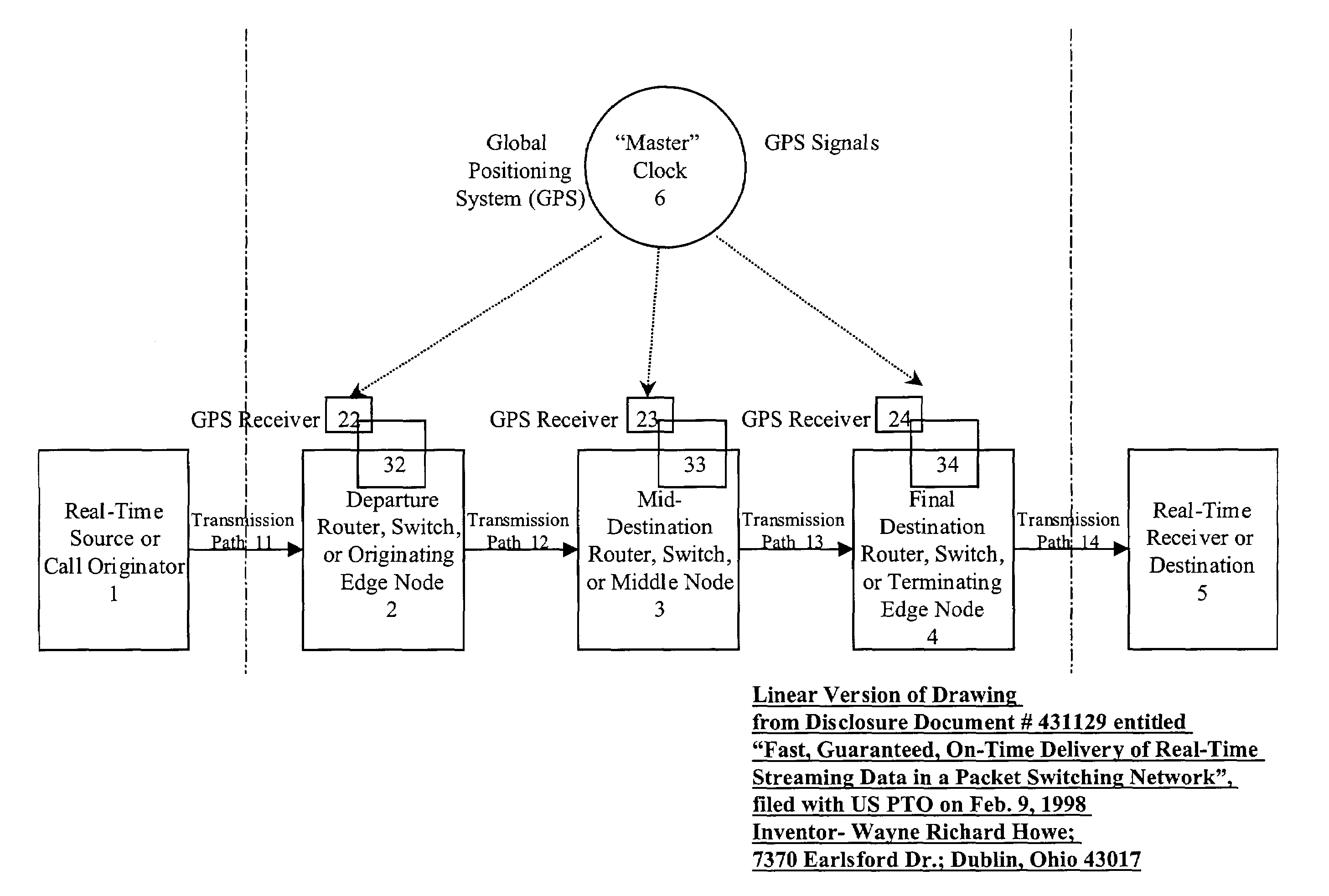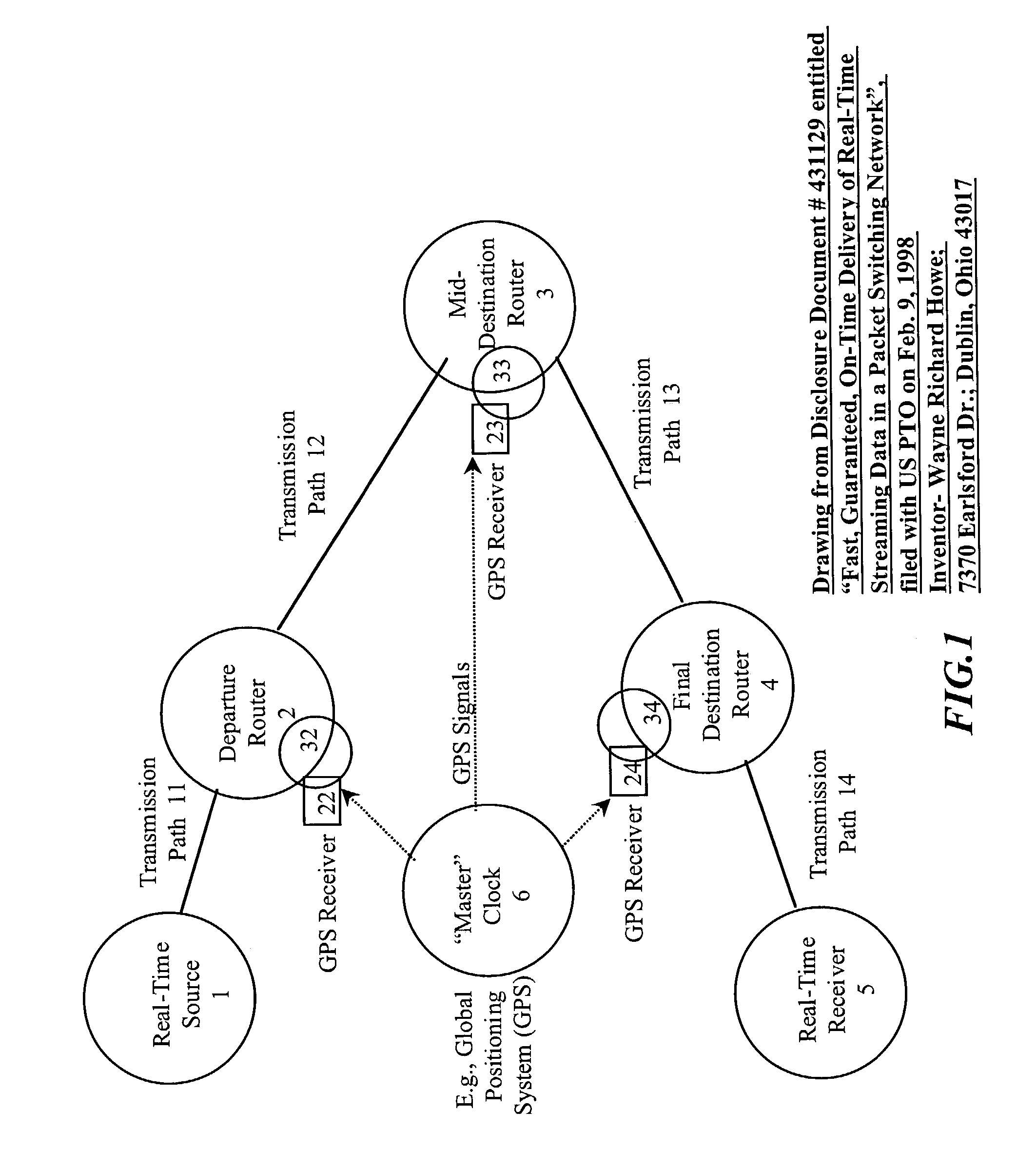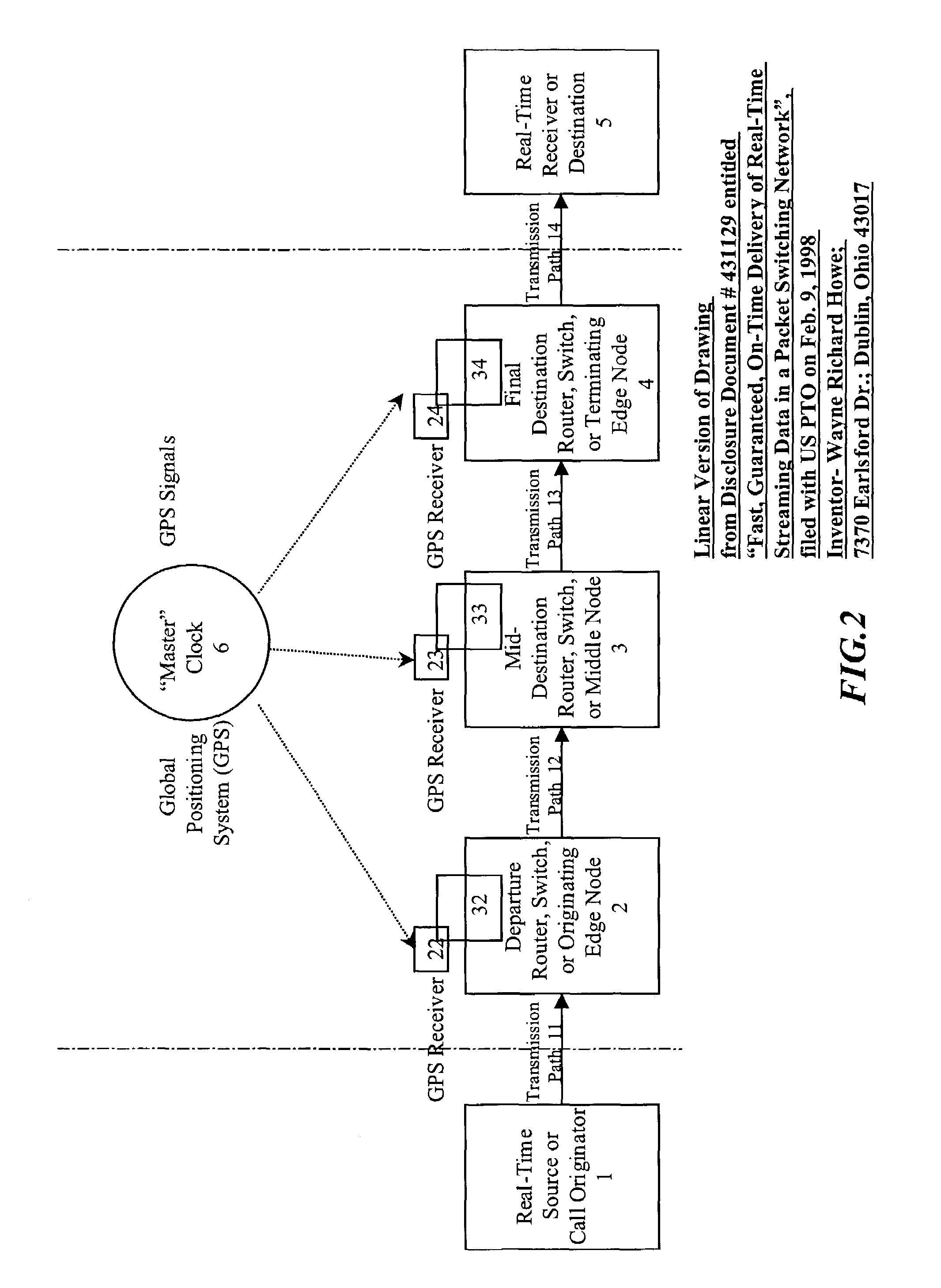Layer one switching in a packet, cell, or frame-based network
a network, packet or frame technology, applied in data switching networks, store-and-forward switching systems, multiplex communication, etc., to achieve the effect of ensuring delivery, high degree of accuracy, and maintaining and further tightening timing synchronization
- Summary
- Abstract
- Description
- Claims
- Application Information
AI Technical Summary
Benefits of technology
Problems solved by technology
Method used
Image
Examples
second embodiment
[0146]FIG. 5 is an illustrative example of the layer one network showing the network element devices descriptively entitled an “overlay” embodiment, wherein the packet, cell, or frame routers or switches 2, 3, and 4 are separate devices both structurally and control-wise from the layer one bypass switching systems 32, 33, and 34 respectively. The purpose of this “overlay” embodiment is to be able to less expensively add layer one switching to existing packet networks with existing packet, cell, or frame switches. In this case, only the layer one systems 32, 33, or 34 along with their synchronization means require additional expense.
[0147]In this second embodiment, the layer one controllers in systems 32, 33, and 34 are not the primary controllers of the packet, cell, or frame routers or switches 2, 3, and 4. Packet, cell, or frame routers or switches 2, 3, and 4 can operate as standalone units and control their own functionality. The layer one systems 32, 33, and 34 are “overlaid” o...
seventh embodiment
[0152]FIG. 7 is a simplified illustrative example showing elements of a seventh embodiment or “pure layer one” embodiment of the present invention, wherein the standard packet, cell, or frame routers or switches 2, 3, and 4 have been removed entirely, such that the network element “pure layer one” embodiment device consists exclusively of the layer one hardware and software 32, 33, and 34, together with synchronization means 22, 23, and 24. This means that this network performs scheduled layer one switching exclusively, such that standard store-and-forward packet switching does not take place in this embodiment of the present invention. As a result, in FIG. 7, source 1 would request a scheduled time across the layer one network. If the network elements accepted the request, source 1 could transmit its information across the network according to the scheduled times. Source 1 would compete for network resources from other layer one scheduled sessions, but only layer one resources and ...
first embodiment
[0166]FIG. 9 shows a high level block diagram of a first embodiment, also termed the “integrated” embodiment, of an integrated layer one switch. This preferred embodiment integrates a packet, cell, or frame switch 100 into the rest of the layer one switch 32, 33, or 34, comprising a first input switch array 59; an input buffer array 60; a second input switch array 61; a controller 120 with timing synchronization means 22, 23, 24; a non-blocking, non-delaying switch 150; a first output switch array 62, an output buffer array 63, and a second output switch array 69.
[0167]In this preferred embodiment, both layer one packets and standard packets, cells, or frames are routed from the previous node to the input lines such as In1 40. In standard packet mode, while standard packets, cells, or frames are streaming into input line 40, the layer one switch controller 120 uses control line(s) 42 to position switch 41 into the position to route the standard packets, cells, or frames from input l...
PUM
 Login to View More
Login to View More Abstract
Description
Claims
Application Information
 Login to View More
Login to View More - R&D
- Intellectual Property
- Life Sciences
- Materials
- Tech Scout
- Unparalleled Data Quality
- Higher Quality Content
- 60% Fewer Hallucinations
Browse by: Latest US Patents, China's latest patents, Technical Efficacy Thesaurus, Application Domain, Technology Topic, Popular Technical Reports.
© 2025 PatSnap. All rights reserved.Legal|Privacy policy|Modern Slavery Act Transparency Statement|Sitemap|About US| Contact US: help@patsnap.com



